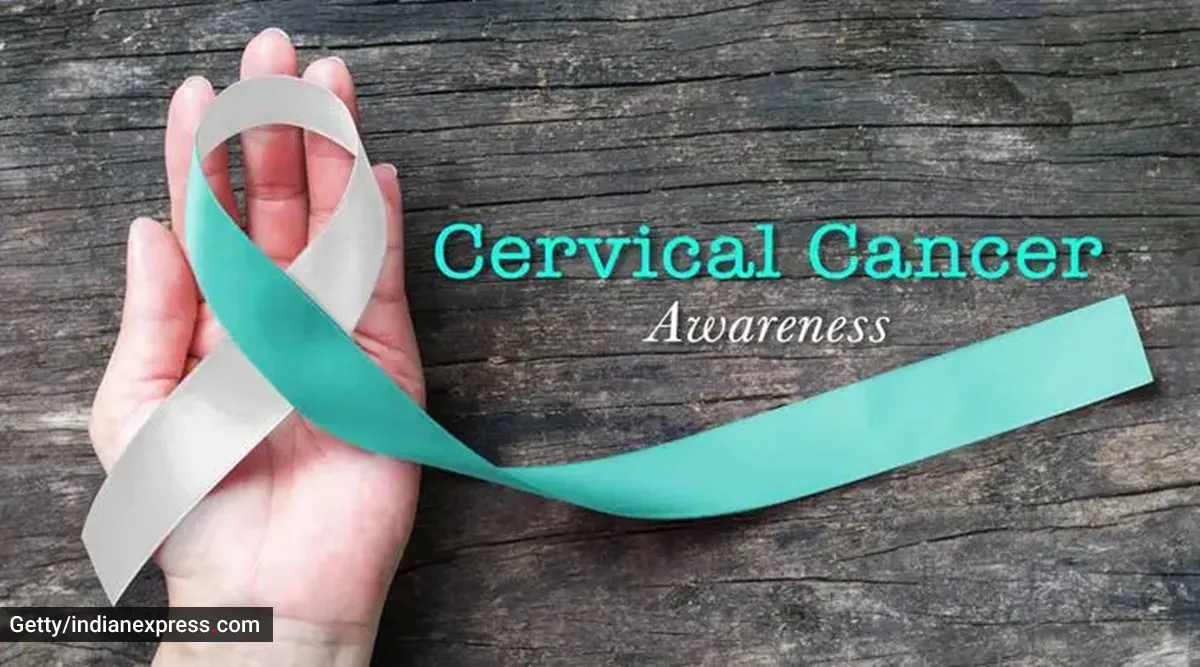 Cervical cancer is a preventable disease and if it is detected early then can be cured with better treatment. (Source: Getty Images/Thinkstock)
Cervical cancer is a preventable disease and if it is detected early then can be cured with better treatment. (Source: Getty Images/Thinkstock) Delays in diagnosis and treatment of cervical cancer are likely to lead to more cervical cancer deaths even as the patients manage to avert Covid-19 deaths, Dr R Shankarnarayanan, senior scientific advisor at International Agency for Research on Cancer, a specialised cancer agency of the World Health Organisation, told The Indian Express. As the world marks Cervical Cancer Awareness Month, Dr Shankarnarayanan throws light on causes of vaccine hesitancy, impact of the pandemic on anti-cervical cancer efforts and the way forward. Excerpts:
NFHS (National Family Health Survey)-5 data shows not many states are promoting the vaccine due to a lack of awareness and absence of directives from the government. Why is there hesitancy to take the vaccine?
Vaccine misinformation, particularly on its safety, unfounded fears on both short- and long-term side effects, vaccine costs and unaffordability for most people, and the long latent period for its efficacy to become obvious seems to be the main factors responsible for vaccine hesitancy.
What is your aim in terms of eliminating cervical cancer?
We aim to reach and maintain an incidence rate of four or less per 1,00,000 women by vaccinating 90% of girls with two doses of human papillomavirus (HPV) vaccination separated by 6-12-month interval before they reach 15 years of age. Besides, we plan to screen 70% of adult women aged 30 years and above using a highly accurate test and treat the women found with precancerous lesions (stage 0). Early diagnosis and adequate treatment of cervical cancer with surgery or chemoradiotherapy can cure a large proportion of early-stage (stages 1 and 2) cervical cancer patients. It is critical that more than 90% of women detected with cervical precancerous lesions or cancer should receive adequate treatment well in time. For maximum impact, the 90%-70%-90% targets must be implemented simultaneously.
 Dr R Shankarnarayanan
Dr R Shankarnarayanan With the ongoing pandemic, how do you see this global strategy of eliminating cervical cancer work?
With the ongoing Covid-19 pandemic, there is an inevitable impact in terms of low coverage of HPV vaccination and screening as well as challenges in accessing diagnostic and treatment services. The low-coverage of HPV vaccination and screening can delay the elimination of cervical cancer, possibly by several years. Deaths from cervical cancer will increase due to inadequate access to diagnosis and treatment. The unprecedented reallocation of healthcare services necessitated by the pandemic across high-, middle-, and low-income countries, coupled with staff shortages and capacity constraints, is likely to hamper cervical cancer elimination efforts globally.
How long is it going to take for a cervical cancer-free society to become a reality?
In countries such as Australia, which has made substantial progress in implementing the 90%-70%-90% strategy, cervical cancer is estimated to be eliminated between 2028 and 2035. With remarkable results for 2 of the targets – 70% of women screened and 90% of women identified with cervical cancer treated – Slovenia could very well become one of the first European countries to reach all 3 targets well in the pathway to elimination. On the other hand, the evolution of a cervical cancer-free society will take several years in those countries which might not comprehensively implement targeted-interventions by 2030.
What is the way forward?
In an effort to support the cervical cancer elimination strategy, a Conquering Cancer campaign was started and a documentary made to showcase the urgent need to have a cohesive strategy towards cervical cancer elimination. By improving awareness of the general population on cervical cancer prevention, by providing tools to health care providers to better address vaccine misinformation, by alleviating fears on vaccine safety, by making HPV vaccines more affordable and accessible, and by reinforcing messaging to empower and remind parents of the importance of HPV vaccination, vaccine-hesitancy can be fought to enable us to reach our goals.
Cervical cancer in India, and beyond
According to WHO’s International Agency for Research on Cancer (IARC) projections, cervical cancer accounted for 124,000 new cases and 77,000 deaths in 2020 in India. Cervical cancer is preventable and curable if detected early and managed effectively. Yet, it is the fourth most common form of cancer among women worldwide, with the disease claiming the lives of more than 300,000 women in 2018. Nearly 90% of these deaths occurred in low- and middle-income countries.
- The Indian Express website has been rated GREEN for its credibility and trustworthiness by Newsguard, a global service that rates news sources for their journalistic standards.

